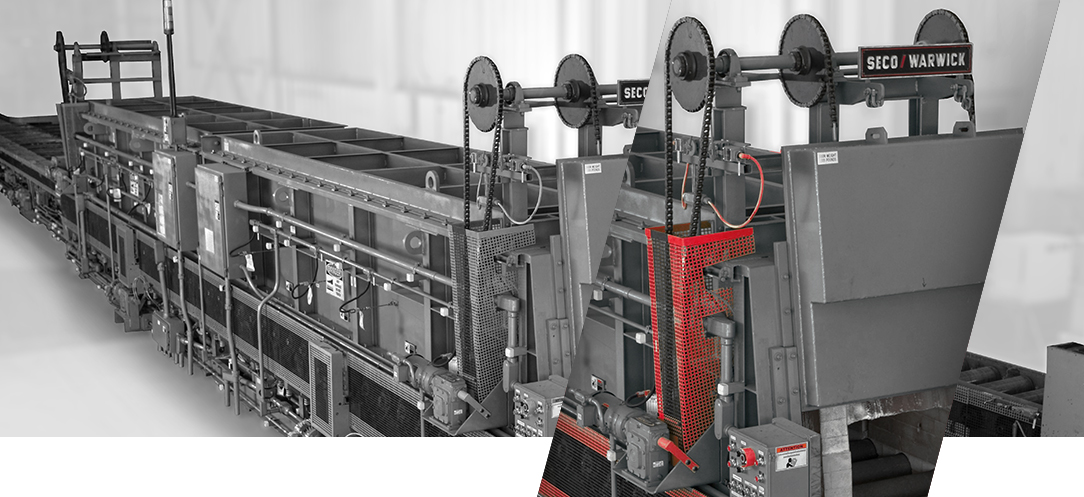Mailrooms, often seen as the unsung heroes of organizational operations, have undergone a significant evolution in the modern business landscape. In this introductory chapter, we’ll explore the evolving role of mailrooms in today’s organizations, the challenges associated with traditional mailroom management, and the promise of transformation brought by mailroom management software. We’ll also provide an overview of the key topics that this blog post will cover.
The Evolving Role of Mailrooms in Modern Organizations
The conventional perception of a mailroom as a place solely for processing paper mail has evolved dramatically. In modern organizations, mailrooms have transitioned into multifaceted communication hubs. They handle a diverse range of materials, including physical mail, packages, and digital correspondence, serving as a vital link between organizations and the outside world.
As the role of mailrooms continues to expand, they are becoming essential not just for handling incoming and outgoing communication but also for ensuring efficiency, security, and compliance. The evolution of mailrooms reflects the broader digital transformation occurring across all sectors of business.
The Challenges of Traditional Mailroom Management
While traditional mailrooms have played a crucial role in organizations for decades, they come with their share of challenges. Manual sorting, tracking, and routing of mail and packages can be time-consuming and error-prone. The lack of real-time visibility and security measures in traditional mailrooms can lead to inefficiencies and even risks to sensitive information.
These challenges underscore the need for modernization, especially as the business environment becomes increasingly digital and reliant on speed, efficiency, and security.
The Promise of Transformation with Mailroom Management Software
The promise of transformation lies in the adoption of mailroom management software. This software revolutionizes the way mailrooms function by centralizing and automating various tasks, making the entire process more efficient and secure. It enhances transparency, security, and compliance, while also reducing the likelihood of errors and delays.
Modern mailroom management software isn’t just about replacing manual processes but about optimizing mailrooms to meet the demands of the digital age. It offers a comprehensive solution that handles both physical and digital correspondence, streamlining operations and providing benefits like efficiency improvements, cost reduction, and enhanced customer and employee experiences.
Overview of What the Blog Post Will Cover
In the following chapters, we will delve deeper into the world of mailroom management in modern organizations. We’ll explore the challenges of traditional mailrooms and the benefits of transitioning to digital solutions. You’ll discover the key features to look for in mailroom management software, learn how to choose the right software for your organization, and get insights on the implementation process. We’ll also present real-world success stories, share thoughts on future trends in mailroom management, and offer a call to action for organizations to embrace the transformative power of mailroom management software. By the end of this blog post, you’ll be well-informed and inspired to take the necessary steps to modernize your mailroom operations.
The Digital Transformation: Mailroom Management Software
In an era defined by digital innovation, the mailroom has not been left behind. The emergence of mailroom management software marks a significant step toward modernizing and optimizing mailroom operations. In this chapter, we will explore the growth of software solutions for mailroom management, delve into the key benefits of embracing digital mailroom management, and highlight real-world success stories of organizations that have reaped the rewards of this transformative technology.
The Emergence of Software Solutions for Mailroom Management
Traditionally, mailrooms were manual, paper-driven environments, often beset with inefficiencies and bottlenecks. The emergence of software solutions specifically designed for mailroom management has revolutionized how organizations handle communication and correspondence.
Mailroom management software offers a unified platform for handling all types of mail, including physical mail, packages, and digital correspondence. This software automates and streamlines many of the tasks that were once labor-intensive and error-prone, paving the way for greater efficiency and control.
Key Benefits of Digital Mailroom Management
The adoption of digital mailroom management ushers in a range of benefits for organizations:
1. Efficiency: Automation, workflow optimization, and digital tracking significantly reduce the time and effort needed for mail processing. This results in faster delivery times and improved overall efficiency.
2. Cost Reduction: By reducing labor costs, optimizing resource utilization, and streamlining operations, digital mailroom management results in substantial cost savings.
3. Enhanced Security: Access control, data encryption, and compliance tracking features help ensure the security of sensitive information, mitigating the risk of breaches and unauthorized access.
4. Improved Customer and Employee Experiences: Faster mail and package delivery, transparency in tracking, and reduced errors all contribute to improved experiences for both customers and employees.
Real-World Success Stories of Organizations Embracing Digital Transformation
Many organizations across various industries have embraced digital mailroom management and reported significant improvements:
1. Global Corporations: Large multinational corporations have experienced considerable enhancements in mailroom operations. This includes faster document processing, more secure distribution, and improved compliance tracking.
2. Healthcare Facilities: In the healthcare sector, where timely communication is essential, digital mailroom solutions have accelerated the sharing of patient records and reports while ensuring compliance with strict privacy regulations.
3. Legal Firms: Law firms, which often handle vast volumes of legal documents, have leveraged digital mailroom management to reduce human errors and ensure the secure and efficient delivery of sensitive materials.
4. Universities and Educational Institutions: Educational institutions have leveraged digital mailroom solutions to streamline their interdepartmental communication, reducing delays in document transfer and enhancing the overall experience for students and staff.
These real-world success stories underscore the transformative power of digital mailroom management in optimizing and streamlining operations across a wide range of industries. By embracing this digital transformation, organizations gain the competitive edge needed to thrive in a fast-paced and dynamic business environment.
Key Features of Mailroom Management Software
Mailroom management software is a powerful tool that revolutionizes the way organizations handle their correspondence, be it physical mail, packages, or digital communication. In this chapter, we will delve into the key features that make mailroom management software an essential asset for modern organizations, covering three fundamental aspects: mail tracking and tracing, package management and digital correspondence, and automation and workflow optimization.
Mail Tracking and Tracing
1. Real-Time Visibility: Modern mailroom management software provides real-time tracking and tracing capabilities for all incoming and outgoing mail and packages. This real-time visibility means you can pinpoint the exact location of an item within your organization at any given moment.
2. Automatic Notifications: The software allows you to set up automatic notifications for specific events, such as the arrival of important documents or the readiness of a package for pickup. These notifications enhance responsiveness and reduce delays, improving the overall mailroom efficiency.
3. Historical Data: Mailroom management software maintains a historical record of all mail and package movements. This historical data proves invaluable for compliance, auditing, and dispute resolution, as it offers a detailed account of the entire mailroom process.
Package Management and Digital Correspondence
1. Digital Mail Handling: Mailroom management software is designed to handle a diverse range of communication, including both physical and digital correspondence. This means it can efficiently manage paper mail, digital documents, and emails, centralizing all communication channels.
2. Package Tracking: The software streamlines package management by providing efficient tracking of packages. This tracking feature reduces the risk of loss or misplacement, ensuring that packages are delivered securely and promptly.
3. Digital Record-Keeping: In the digital age, it’s essential to maintain digital records of all incoming and outgoing mail. Mailroom management software archives digital copies of such correspondence, ensuring no essential information is lost. This also contributes to eco-friendly practices by reducing paper usage.
Automation and Workflow Optimization
1. Workflow Automation: One of the primary advantages of mailroom management software is its ability to automate various manual tasks. This includes sorting, routing, and labeling of incoming and outgoing mail, substantially reducing the time and resources required for these processes.
2. Rules-Based Processing: The software allows you to define rules for mail and package routing based on specific criteria. With these rules in place, items are automatically routed to the right recipients or departments, reducing human error and optimizing efficiency.
3. Optimized Delivery Routes: The software can suggest and execute optimized delivery routes, further reducing the time and effort required to distribute mail and packages within the organization. Not only does this save time, but it also contributes to cost reduction by minimizing resource allocation.
The key features of mailroom management software work in tandem to streamline mailroom operations, enhancing efficiency, accuracy, and security. By providing a unified platform for managing all forms of correspondence, this software empowers organizations to adapt to the demands of the digital age and transform their mailrooms into well-oiled, efficient, and secure hubs for communication. In the following chapter, we will guide you on how to select the right mailroom management software for your organization.


